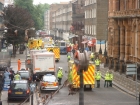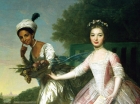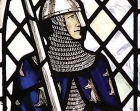Evidence
The use of sources within history lessons has consistently been included within the National Curriculum in England and as a specific assessment objective at GCSE and A-level, on the grounds that unless students know how claims about the past are generated and validated within the subject community, they will be poorly equipped to make sense of or to discriminate between conflicting claims about the past. While the use of sources depends on a process of critical evaluation, history teachers and curriculum designers are now very aware of the risks associated with reducing such evaluation to a series of mechanistic formulae in which ‘source work’ is detached from the enquiry process of answering specific and worthwhile questions about the past. The materials in this section help alert teachers to those risks as well as illuminating important misconceptions that may prevent students from developing a more powerful conception of the nature of historical knowledge The resources here offer a range of practical strategies, rooted in academic and practitioner research, for equipping students to use sources of many different kinds as evidence (rather than merely passing judgment on them). Read more
-

Investigating students' prior understandings of the Holocaust
ArticleClick to view -

It’s just reading, right? Exploring how Year 12 students approach sources
ArticleClick to view -

Learning from a pandemic
ArticleClick to view -

Move Me On 170: adapting to a second school
ArticleClick to view -

Move Me On 191: using sources in lessons
ArticleClick to view -

New, Novice or Nervous? 151: Getting beyond bad ‘source work'
ArticleClick to view -

New, Novice or Nervous? 160: Progression in evidential understanding
ArticleClick to view -

Pedagogical framework for stimulating historical contextualisation
ArticleClick to view -

Picturing place: what you get may be more than what you see
ArticleClick to view -

Polychronicon 128: The Death of Captain Cook
ArticleClick to view -

Practical demonstration: powerful and rigorous history teaching for all
ArticleClick to view -

Questions and answers about questions and answers
ArticleClick to view -

Right up my street: the knowledge needed to plan a local history enquiry
ArticleClick to view -

Stepping into the past: using images to travel through time
ArticleClick to view -

Teaching Year 9 about historical theories and methods
ArticleClick to view -

Teaching pupils to analyse cartoons
ArticleClick to view -

Teaching the very recent past
ArticleClick to view -

The Holocaust in history and history in the curriculum
ArticleClick to view -

The Power of Context: using a visual source
ArticleClick to view -

The dialogic dimensions of knowing and understanding the Norman legacy in Chester
ArticleClick to view

